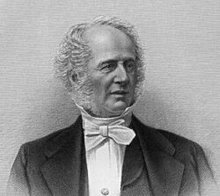So far I think it’s pretty clear that the biggest problem Vanderbilt has offensively is the line. No matter how good Norman and Stacy are, and no matter how many plays Larry can make with his feet, the line being absolutely porous -- which it undeniably has been so far (see, e.g., 7 sacks and 15 tackles-for-loss allowed in just two games this season) -- negates pretty much any possibility of running an effective offense. Add to that the penalties (16 in the first two games alone, good enough to put us in the top 20 most penalized teams in FBS) and the bad snaps, and fans are left with little reason to be hopeful when Vanderbilt has possession of the ball. At this point it almost feels more likely that Casey Hayward will get a pick-6 or Terrell Brannon will knock a fumble loose to be picked up for a TD return by John Stokes than that Jonathan Krause (who, like the two aforementioned players, is a sicko by the way) will find himself with the ball in space.
That’s all depressing, sure, and should be the subject of a lot of coaching staff attention if Caldwell & Co. want a legitimate shot at sticking around beyond this year and next. But let's follow the spotlight for a spell and focus in on Larry Smith. Commentators made a big deal about Larry’s stat line in the opener against Northwestern, and sure, I get it -- 19 of 33 for 244 yards with a TD pass and one INT ain’t terrible, especially for a QB of a team that couldn’t spell offense a year before.
But I thought the numbers sort of belied a poor performance by LS in Game 1. He seemed to be aiming the ball all night rather than cocking back and just throwing it to his targets. The result was a few underthrows, a slew of overthrows, and a truckful of squandered opportunities at first downs when the Commodores were driving and had a chance to take the game over with the D off the field.
After the Second Act, I’m still unimpressed. This time he went 8 for 15 for a mere 70 yards, with no touchdowns or interceptions. But again, the stat line only tells part of the story. I decided to chart Larry’s passing and decision-making against LSU, and here’s the the storyline that revealed itself. (For the Cliffs Notes version, scroll down to “The Moral”).
The Story
(1) On his first pass play, LS had time but overthrew John Cole on 3rd and 1. Cole had a step on the LSU safety and might well have scored had the ball been within reach. Result of first possession: Punt.
(2) Second pass play: overthrow of Krause who had absolutely burned the corner, to the point that the ref would have called pass interference if the ball had been close to landing in bounds. Result: Missed opportunity #2.
(3) A good throw to Tray Herndon on 2nd and 3. A low-pressure down, a big first-down pickup.
(4) A dumpoff pass to Brandon Barden near the sideline on 3rd and a mile goes for two yards. Hmmm... Result: Punt.
(5) On 2nd and 20 the Commodores needed a big gain...but the ball sailed high over an open Udom Umoh. 3rd and 20? Yeah, that should work out well for us. Coaches didn’t even pretend to try to move the chains. Result: Punt.
(6) The best throw of the night as far as I could tell. LS finds Krause open on 3rd and 9 for a clutch first down. But then...
(7) Larry misfired under pressure. I won’t put that one on him. Wait for it...
(8) Next set of downs, LS holds the ball WAY too long on 3rd and 7. Result: Sack #3 of the game and a punt after the Dores had been driving into LSU territory with 3:00 left in the half .
(9) Another hold-the-ball-too-long sack on 1st and 10 in LSU territory with under 2 minutes in the half has me throwing things across the room.
(10) Right after that play, on 2nd and 21, Larry telegraphs a pass and the LSU defenders easily gobble up the play. Incompletion is followed up by Larry’s 2-yard designed run on 3rd and 22, leading to yet another punt and a fizzle-out of the first half that could and should have ended with momentum in our favor. Remarkable.
The rest of the game, as those who had the stomach to watch will recall, followed much the same script. There was the overthrow of Barden in the end zone which forced us to kick a field goal for our only points of the game. The deflating 3-and-out coming on the heels of Casey Hayward’s electrifying INT in the end zone. The bad option pitch that killed a drive late in the 4th...
Having said this, it wasn’t all bad. With the Dores down 20-3 in the 4th quarter, Larry finally seemed to find a rhythm. He connected with Barden on three straight passes and looked much more calm and confident. Funny how that happens when the game is all but out of reach.
The Moral
The broad-stroke lessons I think Larry should take away from the first two games are these:
1. Get out of your head. When the downs are precious and the pressure is on, LS is spraying the ball all over the place. When the heat is off, he can be very effective. We saw his ability in the Music City Bowl and we saw it on Saturday when the game was basically decided. (Some will say LSU just backed off defensively, but anyone who saw the hits they were laying late in the game knows that’s simply not true.) Larry Smith has the ability to make plays with both his arm and his legs -- he just needs to let go and do it. Remember the Bowl, Larry. Better yet, remember playing pee-wee. Have some fun.
2. Get rid of it or get a move on. Decision-making has been a big factor. With this offensive line, Larry needs to be able to get rid of the ball quickly when the play is not there and know when he’s got a chance to tuck and run. He’s experienced enough by now to feel this. The coaches could help by giving him more quick-hitting pass plays, which are what’s worked best so far. But a lot of this is just feeling the rush and seeing your options (in 1.5 seconds).
3. Look off a receiver every now and again. Speaking of vision, here’s a tip that'll make your life a lot easier. It’s amazing how much quarterbacks can open up a football field if they don’t stare down their #1 read every time they drop back in the pocket. The O-line is bad, yes, but it doesn’t take long to go through a quick progression or make a short pump fake. Do it, Larry. Do it.
I know it’s “harder than it looks” and “more complicated than I’m making it seem” and all that. But in my unsophisticated opinion, that's all there is to it.
(Check back in a week or two for The Story of Larry: Chapter 2.)
Subscribe to:
Post Comments (Atom)











6 comments:
Larry Smith = Chris Nickson
I really like this post. And I don't just blame Larry. Sure I've never seen him take a progression while watching every game he's played in--but why do our coaches not have him taking a progression?
I've heard that our coaches are giving him a "primary receiver" from the sideline. Not a good idea. Sure, you might do it once in a while when you REALLY have something you've seen from up top, but otherwise he needs to be taking a progression. High/low, low/high, whatever they prefer, he needs to be doing it. This is bad coaching (lots of penalties are also bad coaching, but I won't get into that as this is about Larry).
The introduction of a progression into our passing game and a few on-time throws every now and then (I'm talking about the ball arriving as the receiver comes out of a cut--at which point he has the most separation) would do wonders for our passing game and offense. I really think if our coaches (and then Larry, subsequently) could wrap their head(s) around these two concepts, we'd see that some of our receivers have separation--they just aren't getting looked at or receiving the ball during the small timespan that a receiver will be open in a league such as the SEC.
To be honest, most of our passing plays are designed with routes less than 14 yards. For receivers on our team such as Cole or Krause who run a 4.4 40-yard dash and crisp routes, these are pass plays that should have the ball being delivered in ~2 seconds. Our O-line can provide 2 seconds (and usually does), we just don't deliver on time.
Sadly, if Larry hasn't learned a progression or to throw on time in 4 years of playing at Vanderbilt, it's unlikely we'll see it this year. But we can hope.
Sorry Chuck,
LS = injured CN
LS << healthy CN
They need to help Larry. Larry is obviously not a great QB that can carry a team, but he does have some talent.
They need to run more play action roll outs where the QB has a run pass option. Larry throws well outside the pocket.
I hate the when they fake the dive and then set up the pass. That is hard for the QB. The defender doesn't have to change direction to a significant degree so the fake doesn't really slow them down very much. Also, the QB is preoccuppied with not fumbling the ball and then is expected to get his eyes up and find a receiver in 1 second before he gets drilled.
We need to run some stretch plays from under center and then have play action of those plays where the QB can roll out in the opposite direction. Get the defender going one way for the run and make them change direction on the fake. It will slow them down and it will also give the QB time to make a better decision on the roll out. Larry can throw on the run.
Is this obvious to anyone else? He doesn't have time to make a real progression or set up in the pocket bc of our o-line. He needs help and play action and screens are the best option.
I meant Larry can't carry the team in the post above.
I agree -- when he's outside the pocket he throws much more instinctively. It's a little bit counterintuitive but his best pass against NU was the touchdown to Barden where he was completely on the run and just slung it off his back foot with no fundamentals whatsoever. The one place where I disagree with you is about progressions in the pocket -- it doesn't take that much time and the main point is that even when he has the time Larry is staring down his reads, which you just can't do at this level. I won't hesitate to call out the play-calling but Larry's got to step it up too.
Post a Comment